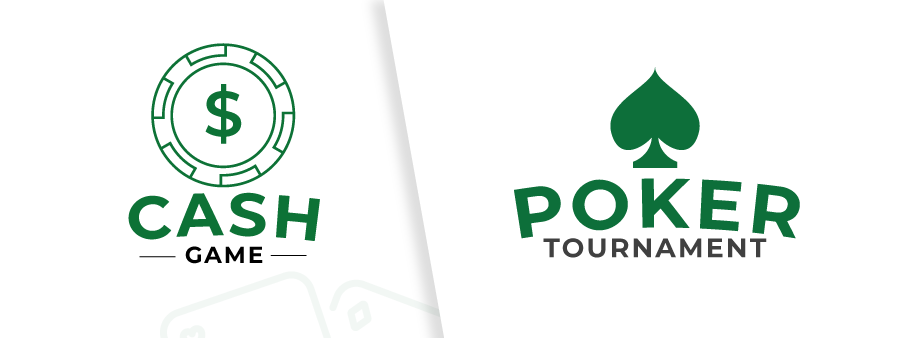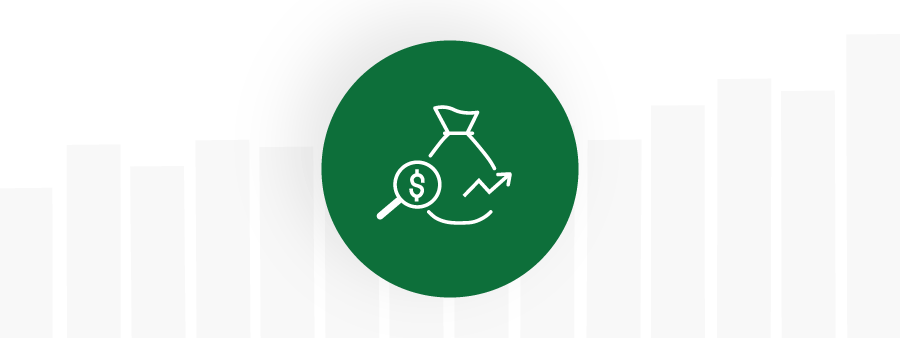Cash game poker strategy isn't just about the cards; it's about the cunning, the bluffs, and the high-stakes mind games.
There are many ingredients necessary for success if you want to be a consistent winner in cash games.
Dive into this guide and uncover the secrets that'll transform your play from predictable to powerhouse.
Here’s what you’ll learn:
Ready to up the ante? Let's deal you in!
Author’s note
I recommend, at least as a starting place, the guidelines in How to Win at Poker. In addition, since so many of you may already be familiar with tournament poker, I’d like to add some emphasis on the subjects below.
A cash game, also known as a ring game or live action game, is one of the most fundamental formats of poker. Unlike tournament poker, where players pay an entry fee and compete for a prize pool, cash games allow players to join and leave the table at any time.
Here's a breakdown of what defines a cash game:
- Buy-ins and Stakes: In cash games, players buy in for real money or chips that represent real currency. The minimum and maximum buy-in amounts are typically predetermined. For instance, in a $1/$2 No-Limit Hold'em game, players might buy in for anywhere between $50 and $200.
- Continuous Play: One of the defining features of cash games is that they run continuously. As long as there are at least two players willing to play, the game can go on indefinitely. Players can join or leave the table whenever they choose.
- Real Money Value: Each chip in a cash game has a direct monetary value. If a player has 1,000 chips in a $1/$2 game, those chips are worth exactly $1,000. This is in contrast to tournament play, where chip values do not correspond directly to cash.
- Flexible Stakes: Cash games cater to a wide range of players, from those looking to play for just a few dollars to high rollers willing to bet thousands. Tables are usually categorized by their blind sizes, such as low, medium, or high stakes.
- Rebuy and Top-Up: If players lose their chips, they can rebuy into the game as long as they have the funds. Similarly, if their stack diminishes, they can top-up to the maximum buy-in if they choose.
- Strategy Differences: The strategy in cash games can differ significantly from tournament play. Since players can rebuy, the fear of elimination is removed, leading to different dynamics and play styles.

Many people enter the world of competitive poker by playing in tournaments.
Tournaments have the advantage of a fixed buy-in amount. This is good for people on a limited bankroll. They start with the same number of chips as all other competitors.
They don’t feel intimidated by those who may wish to buy in for more than they. And their costs for a session are limited to the tournament buy-in. There is a finiteness about the experience that appeals to many people.
Tournament players sometimes decide that they want to try out a cash game, thinking their tournament experience will serve them well.
Many of the skills are transferable. Even so, tournaments and cash games are not quite the same thing.
This guide is meant to help explain how playing in a cash game is different from playing in a tournament; and how you can succeed implementing a proper poker cash game strategy.

The first difference between a cash game and a tournament is in table selection.
In a tournament, as soon as you sign up, you are assigned a table and a seat. They are immutable. For the duration of the tournament, you have no choice in where you sit. You may be moved to a different table, as the tournament consolidates tables when players are knocked out.
But you have no say whatsoever in the table or the seat in which you play.
Cash games are very different in that respect.
You do get a choice in table selection and seat selection. That choice is very important and can be the determining factor in whether you leave a winner or loser.
Here’s how it works.
When you arrive at a poker room you approach the brush, the person in charge of the seating of players. They will be the person standing in front of the board listing all of the games, with names typically on a waiting list. You tell them what game or games you are interested in playing - both the type of game and the stakes of the game.
If there is an open seat, they will direct you to it. If there is more than one open seat, they will point them out to you and ask you to sit down in one of them. If there are no empty seats, they will put your name on a waiting list.
Once you are seated, you are allowed to move to seats as they open up - both at your table and at other tables.
But you won’t be told this in advance. And you won’t be asked if you’d like to move. You must take the initiative.
If you want to move seats at your table, you may ask the dealer for a seat change button.
This doesn’t force you to move into the next vacant seat.
It just gives you the option to do so, ahead of anyone without a seat change button. Typically, three seat-change buttons are available, numbered 1, 2 and 3, with 1 having the first option to move to an open seat.
Increasingly, however, the house doesn’t bother to give out buttons. They just give you priority based on how long you’ve been seated at the table, with those seated the longest having greatest priority.
When a seat opens up, if you want it, simply ask the dealer if you may move. If no one else does, you may do so. If you are soon to be a blind you will be asked to post the blind - since you can’t move seats to avoid paying the blind. Gladly pay it. It’s a small price to pay for getting a better seat.
To change tables, you notify the floor of your interest in moving. Some rooms are very casual about this. They’ll move you when you ask, if something’s available, and if it doesn’t leave your table short-handed. Otherwise, they’ll tell you to wait until something opens up. The better managed rooms will have a table change list.
As seats at other tables open up, you will be offered the chance to move.
You should regularly scout out other games, to determine which tables are likely to be more profitable for you. When you spot an open seat at a good table, ask the floor if it’s okay for you to move. The floor generally is happy to accommodate players, provided you aren’t leaving a table short by moving to another table.
All of this raises the question of why and when should you move to another seat or table? How can you tell which table or which seat is likely to be most profitable.

If you’re playing in a cash game, you should know what makes a good seat and what makes a bad seat.
A bad seat is one that is followed by a player or players who are very active and aggressive. This puts you in a tough spot much of the time. When you are deciding whether and how to enter a hand, you want to have an idea of how much a round of betting will cost you.
This is hard to do if the source of the action is coming from your left, as you will generally not have the advantage of seeing their action before you have to decide whether and how to enter a pot. Accordingly, if the most aggressive and active player is to your immediate left, you are at a disadvantage.
A good seat is one that follows a player who is particularly active - and deep.
You’d like to see how the loose aggressive player, with lots of chips, plays their cards before you have to decide how to play your hand. For example, if they raise and you’re even moderately strong, you might want to isolate them by raising, to prevent other medium strength hands from entering against you. You can’t do this if they are seated after you.
If you’re seated to their right, and a seat opens up to their left, you might want to change.
Similarly, if there are some really passive players or rocks, you don’t mind moving to a seat with them to your left. Ideally, you’d like the most active, aggressive and tricky players to your right, so you can see their action first; and the soft passive players on your left, because you don’t care what they do nearly as much.
Table selection is also critically important in cash games.
Tight, short stacked games are typically unprofitable in cash games because of the erosive effect of the rake.
There is also likely to be less money in play for you to win. Most pots will be relatively small - meaning the rake will have its full effect. Think about it. Imagine a $1/2 game. If the rake is 10% with a $6 maximum, every pot of $60 or less will be fully raked. That will typically be the case if people are very tight and passive - as the pot will seldom get larger than $20 or $30.
On the other hand, if stacks are deep and players are loose, wild, and aggressive, those pots will frequently be much larger - often over $100. The maximum rake kicks in at $60 - so any pot larger than that has a proportionately smaller percentage of the pot taken.
With a $6 maximum rake, a pot of $120 will be raked at 5%. A pot of $180 will be raked at 3%. A pot of $600 will be raked at 1%.
As mentioned earlier, you should be on the lookout for soft games with big stacks.
Don’t be shy. Ask to move. The worst that can happen is that the floor starts to think you are a pain in the ass. That’s a small price to pay for a profitable session.
There are a few other ingredients to a good table.
You want tables with a happy, playful, gambling mood. If players are sitting back in their chairs, silent, grim, arms crossed, drinking coffee, Red Bull, and water only, that’s a sign of a bad game.
On the other hand, if people are smiling, laughing, kidding around, drinking at least a little bit of alcohol, watching sports on TV, filling out KENO slips, watching the horse races, that’s a sign of a good table.
Similarly, if you see a lot of heads-up pots, a lot of raising, re-raising, and folding - that’s not a good sign.
But if you see a lot of checking, calling, and more calling - with four or more players seeing the flop and a few sticking around until the river - that’s the type of game you want to be in.
Just keep in mind that in a cash game, you can ask for a table change or a seat change whenever you want. Take advantage of that privilege!

Tournaments have a fixed cost. There may be re-entries, but it’s much more difficult to burn through a bankroll playing in a tournament than playing in a cash game. (Of course, you can burn through a bankroll by entering many tournaments - but that’s a subject for another day).
In cash games you have to be much more careful about how, when, and whether you keep buying in.
The general rule of thumb is that your total poker playing bankroll should be 20 to 100 buy-ins for the game - depending upon how difficult it is for you to amass that sum. That would be a minimum bankroll of $4,000 for a $1/2 game for example.
Please see my guide on this subject to understand more about how to make sure you are properly financed for your cash game.
In general, you should be playing for a stake you can afford - with enough of a cushion to avoid burning through your entire bankroll and having to start from scratch. This tends to mean that you become more careful as you move up in stakes, as the bankroll requirements are greater, as it is generally harder to replenish a big bankroll than a small one.
And, perhaps most important of all, you should resist the urge to play bigger to more quickly recoup your losses. Instead, you should tend to be willing to drop down in stakes to take advantage of the poorer play of the lower stakes games.

Bad beats, getting coolered, and long losing streaks affect tournament players as well as cash game players. But cash games are more susceptible to the effects of steaming, since it’s easier in a cash game to reload and put more money into play.
The key is to recognize your own tilt triggers - the things that tend to send you off into emotional rather than logical play. It may be that you are particularly sensitive to being outdrawn. You might find that once you have burned through your second bankroll that you become overly aggressive, or fatalistic, or otherwise overwhelmed with a self-destructive tendency in your play.
You might have an aversion to a particular player - who just rubs you the wrong way, and sets you off into tilt-land. You may be the type of player who loses control when you put together a winning streak. The big stacks of chips you’ve recently accumulated may cause a type of poker mania - that has you spewing uncontrollably with your new-found wealth.
Whatever it is, being forewarned is being armed. When those tilt triggers present themselves, you are best to leave the table for a bit, to get your bearings and to think about whether you should continue to play.
It's also helpful, I’ve found, to take regular breaks, every hour or two, just to assess your mental frame of mind.
Make it a habit to regularly get up from the table, maybe getting a snack or something to drink, as you think about your game and your play. You might discover that you are not playing you’re best game any longer. If that’s the case, you can leave for the day.
Or, if you think you’re still at your best, you can return with a commitment to stay focused and continue in playing your best game.
The thing about a cash game is that you can leave whenever you want. There’s no time limit or defined time to play. Leave when you want; stay as long as you want! Take advantage of that major difference from tournaments.
Please see my guide on winning tips to learn on how to combat the tendency to tilt.

The rake in a tournament is a fixed dollar amount that is taken out of your total tournament buy-in. Once it’s paid, you don’t have to worry about it or its corrosive impact on your bottom line.
The rake in a cash game is ongoing and relentless. Every hand is raked, for as long as you play.
Though some think of it only as a slight annoyance, paid by the winner, not affecting their profit much if at all; this is completely wrong. The rake is often the difference between profit and loss.
A quick illustration should be helpful:
Imagine a $1/2 game that lasts for 10 hours. 8 guys typically play in a home game, with no rake. They decide to come to a casino for the fun and excitement of playing in the poker room, with a house dealer and free drinks. In their home game they typically buy in for $200 each.
That’s what they do at the casino.
The casino charges a rake of 10% up to a maximum of $6 a hand. The good house dealer deals, on average, about 40 hands an hour.
Let’s say the typical hand is $50. Some are bigger; some are smaller. But the average rake is $5 a hand. Add in a $1 tip for each hand and you have $6 coming out of the average hand.
The guys start at 2PM on a Saturday afternoon and they play for 10 hours, ending at midnight.
In this highly theoretical and artificial example, by midnight, every single player would be broke. In fact, they would all go broke well short of midnight -- by about 8:45PM!
Just do the math
$6 a hand for 40 hands an hour is $240 an hour coming off the table in rake. Eight buddies brought $200 each. That’s $1600 total. Divide $1600 by $240 and you get 6.6 hours. If they started at 2:00 PM, 6.6 hours later they’ll have run out of money. It will only be 8:45!
Yes, you can argue that some might have more than $200.
You might also be right that the typical dealer would be slower than 40 hands an hour, or that the typical pot might be less than $50. Even so, however you adjust the numbers, by the end of the 10 hours, all of the players are likely to have burned through most if not all of their bankroll.
As you can see, though the rake may not seem to matter at the end of a hand, when you add it up it can completely destroy your ability to make money.
So What Should a Good Player Do?
For one, you can be more decerning in the games you’ll play in. Avoid poker rooms with high rakes. Where the rake is high, talk to management and tell them that you think it’s too high. Even if they don’t lower the rake, they may be less willing to increase it in the future.
Avoid short-stacked games
If your game is strong, be more likely to move to somewhat bigger games (like $1/3 and $2/5) where the pots are bigger, and the rake, with its cap, is thus a smaller percentage of the pot.
Online games tend to be raked much less than in person games. If the quality of the opposition is equal, you will generally fare better in lower raked on-line games than in more heavily raked brick and mortar poker rooms.

Cash games lend themselves to more nuanced play, based on your opponents, as you will tend to play against the same players for longer periods of time than in a tournament.
In a tournament you are frequently moved to a different table, as tables break.
Your reads on players are less likely to bear fruit, as the players you get reads on will be moved to another table - or you will be. In cash games, you’ll tend to have the same lineup for an entire session, as players tend not to change tables.
Use this to get a good read of your opponents. Recognize and remember their general style of play, and work to exploit their tendencies. Please take a look at this guide if you’d like to better understand how to recognize player’s tendencies and tells.
You’ll also learn ways that you can exploit opponents based on their tendencies and by a few giveaway tells that I identify.

Cash games, unlike tournaments, have no fixed starting or stopping times.
A tournament begins at an announced time and ends either when you are knocked out or when you win the tournament (or make a deal that ends the tournament for everyone).
But in cash games, especially in large rooms with action seven days a week and 24 hours a day, you can theoretically keep playing until you drop from exhaustion, run out of money, or both.
Many poker writers have opined that you should stay as long as the game is good; and only leave if you determine that the game is no longer good or you are no longer playing well. They suggest not having a time limit, a win limit, or a loss limit. I disagree with those suggestions.
I have found that most poker players, especially new players, are not good at determining whether the game is really good, or if their skills are diminished. They often rationalize their staying, even when their attention and skills have diminished because of weariness, by mistakenly thinking they are in a really good game.
The problem is that after too long a period of play, the skills that have diminished include the skills of recognizing their own weakened play and the skill of recognizing how good or bad a game is.
Better, from my experience, to set an end time.
This end time can be a chronological one - “I’ll leave after 3 hours” , a loss limit “I’ll leave if I’ve lost two buy ins” or a win limit, “I’ll leave if I double my buy in”.
Or some combination of the three. It doesn’t really matter. I suggest that you err on the side of caution, and at least walk away from the table to evaluate how you are doing when any of those admittedly artificial deadlines are reached.
And, just as you want to set time limits, you don’t want to give in to any tendency to leave just because you’ve won a big hand, or leave just because you’ve gotten back to even.
If the game is good, and you’re feeling alert, and you think there are still deep-stacked bad players playing badly, stick around.
Don’t leave to lock in a win. But first take that break and assess how things are going.
Wrapping Up

Mastering cash game poker strategy is a journey, not a destination. As the game evolves, so should your tactics and approach.
We've barely scratched the surface here, so if you're eager to dive deeper and truly level up your game, the Poker Academy contains a wide range of guides on every poker concept you will need in your arsenal.
Dive in and continue your learning towards poker mastery!

Bonuses
Casinos
Games
Academy
News
Shop
NEW Q&A
Sweepstakes




























